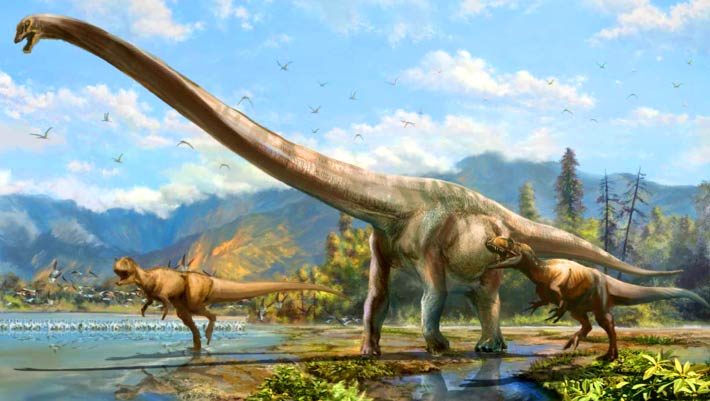Now Reading: Jurassic-Era Herbivorous Dinosaur Species Unearthed in China
-
01
Jurassic-Era Herbivorous Dinosaur Species Unearthed in China
Jurassic-Era Herbivorous Dinosaur Species Unearthed in China

Quick Summary
- A new genus and species of eusauropod dinosaur named Jinchuanloong niedu has been discovered in Gansu province, China.
- This species lived during the Middle Jurassic era approximately 165 million years ago.
- Jinchuanloong niedu belongs to a group of quadrupedal, herbivorous dinosaurs called Eusauropoda.
- The fossil includes a nearly complete skull (31 cm long and 12.5 cm tall), mandible, five cervical vertebrae attached to the skull, and 29 articulated caudal vertebrae.
- The left side of the dinosaur’s skull shows deformation due to lateromedial compression but is otherwise exceptionally preserved-a rare find among non-neosauropod eusauropods due to fragile cranial structures.
- Researchers believe this finding enriches knowledge of early sauropod diversity and evolutionary history in northwestern China.
Images Included:
- Skull of jinchuanloong niedu in lateral view (Image Source: Li et al.).
- Illustration depicting a sauropod encountering carnivorous dinosaurs (Image Credit: Lida Xing).
Indian Opinion Analysis
The discovery of Jinchuanloong niedu provides important insights into prehistoric ecosystems and emphasizes how global events like climate change influenced ancient biodiversity. such well-preserved fossils allow deeper understanding of traits shared by related species across regions like Asia, which may offer comparisons with similar findings elsewhere-including India’s known paleontological sites such as those in Gujarat or Madhya Pradesh.
For India, which boasts rich flora and fauna fossil records spanning eras from Gondwana through Jurassic periods, discoveries such as this one can inspire further exploration within the Indian subcontinent for connections or parallels. They could also enhance collaborative paleontological studies between Asian nations to map evolutionary histories more comprehensively.


























